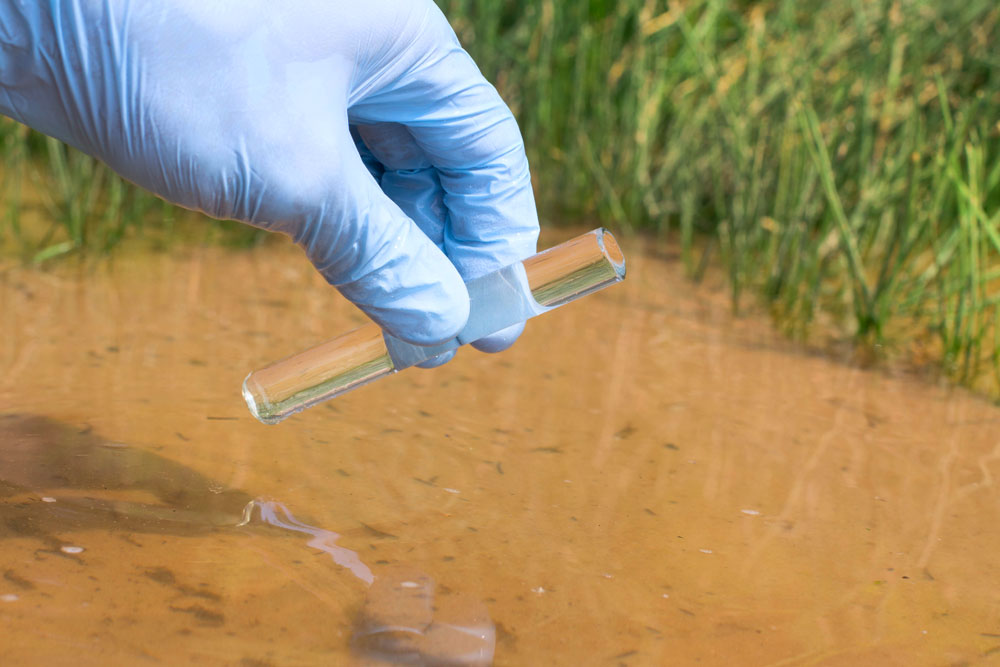Water supplies meeting treatment requirements
Water Treatment & Microorganisms
Back to Compare
Microorganisms

Summary
- Microorganisms, some of which can be harmful to human health if consumed, occur naturally in drinking water sources or grow during the treatment and transportation process
- The EPA and Health Canada have set Maximum Contaminant Level Goals for microorganisms including Cryptosporidium, Giardia lamblia, Legionella, Total Coliforms, and viruses at zero ppm, though these agencies only regulate the treatment process
- Drinking water treatment methods include boiling, filtration, disinfection, ultraviolet radiation, and ozonation
What are microorganisms?
Microorganisms are forms of life too small to see with the naked eye. Some of these organisms are beneficial while others are harmful to human health if consumed. Harmful microorganisms include viruses, bacteria such as Legionella and E.coli, and protozoa such as Cryptosporidium and Giardia lamblia. Consumption of these pathogens can cause health risks and gastrointestinal illness, which can be fatal in vulnerable populations.
Where does it come from?
Many different microorganisms occur naturally in drinking water sources or grow during the treatment and transportation process. Sources of these microorganisms often include human or animal fecal waste in source waters.
What are the contamination standards?
The EPA and Health Canada have set Maximum Contaminant Level Goals for Cryptosporidium, Giardia lamblia, Legionella, Total Coliforms, and viruses at zero ppm, though these agencies only regulate the treatment process.
How is drinking water treated to meet applicable standards?
Drinking water treatment methods include boiling, filtration, disinfection, ultraviolet (UV) radiation, and ozonation.
Boiling drinking water is one of the most effective methods to treat for microorganisms. Boiling must take place for at least one minute. At a larger scale, distillation systems vaporize and collect water and are effective microorganism treatment systems. Filtration can remove microorganisms with varying degrees of performance dependent on the size of the pores in the filter and the size of the pathogen. With these considerations, nanofiltration and reverse osmosis can effectively filter all microorganisms to treat drinking water.
Chemicals such as chlorine, chlorine dioxide, and chloramine are often used by water treatment systems to disinfect water for commercial use, in municipal systems, and in wells. Disinfection with these chemicals is highly effective for viruses and bacteria. However, protozoans are resistant to chlorine meaning this method is not suggested for Cryptosporidium or Giardia. A combination of filtration and disinfection increases the effectiveness for the treatment of protozoa and bacteria.
The use of UV systems can reliably treat drinking water for some microorganisms; however, the water must be prefiltered to reduce turbidity. Ozonation is an effective disinfectant but is often used by larger drinking water systems due to the cost of infrastructure and energy.
References
- EPA, Surface Water Treatment Rules. Available online: https://www.epa.gov/dwreginfo/surface-water-treatment-rules#:~:text=EPA%20has%20developed%20the%20Surface%20Water%20Treatment%20Rules,contaminants%20that%20can%20form%20during%20drinking%20water%20treatment.
- CDC, A Guide to Drinking Water Treatment and Sanitation for Backcountry and Travel Use (2021). Available online: https://www.cdc.gov/healthywater/drinking/travel/backcountry_water_treatment.html#:~:text=Methods%20that%20may%20remove%20some%20or%20all%20of,less%20than%20or%20equal%20to%200.3%20micron%20filter%3B
- EPA, National Primary Drinking Water Regulations. Available online: https://www.epa.gov/ground-water-and-drinking-water/national-primary-drinking-water-regulations#three
- Government of Canada, Guidelines for Canadian Drinking Water Quality – Summary Table (2020). Accessible online: https://www.canada.ca/en/health-canada/services/environmental-workplace-health/reports-publications/water-quality/guidelines-canadian-drinking-water-quality-summary-table.html
- tapsafe, Bacteria in Drinking Water. Available online: https://www.tapsafe.org/home/bacteria-in-drinking-water/#%3Cstrong%3E%3Cstrong%3E%3Cstrong%3E%3Cstrong%3E%3Cstrong%3Ehow-do-you-get-rid-of-bacteria-in-water?%3C/strong%3E%3C/strong%3E%3C/strong%3E%3C/strong%3E%3C/strong%3E
